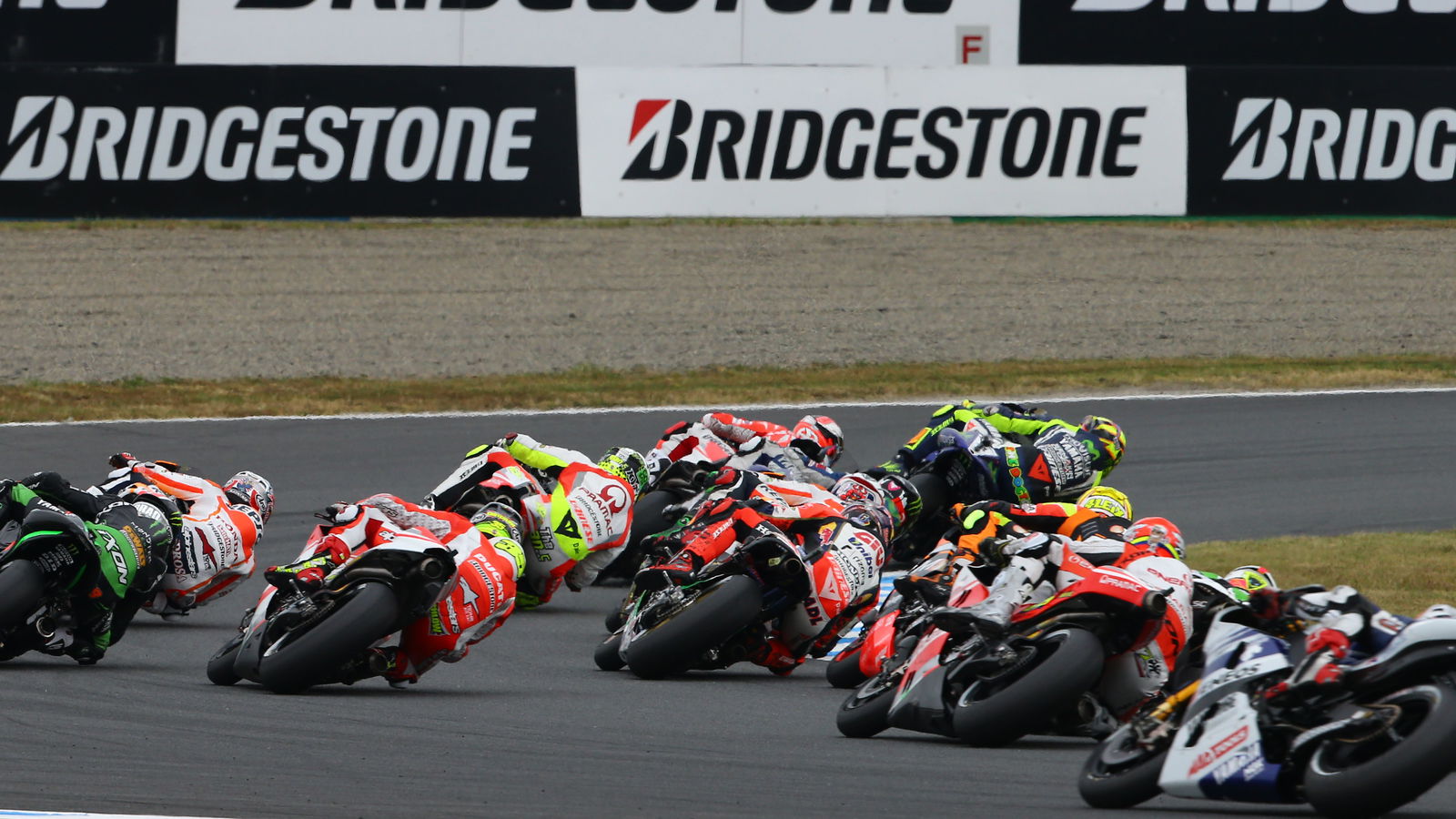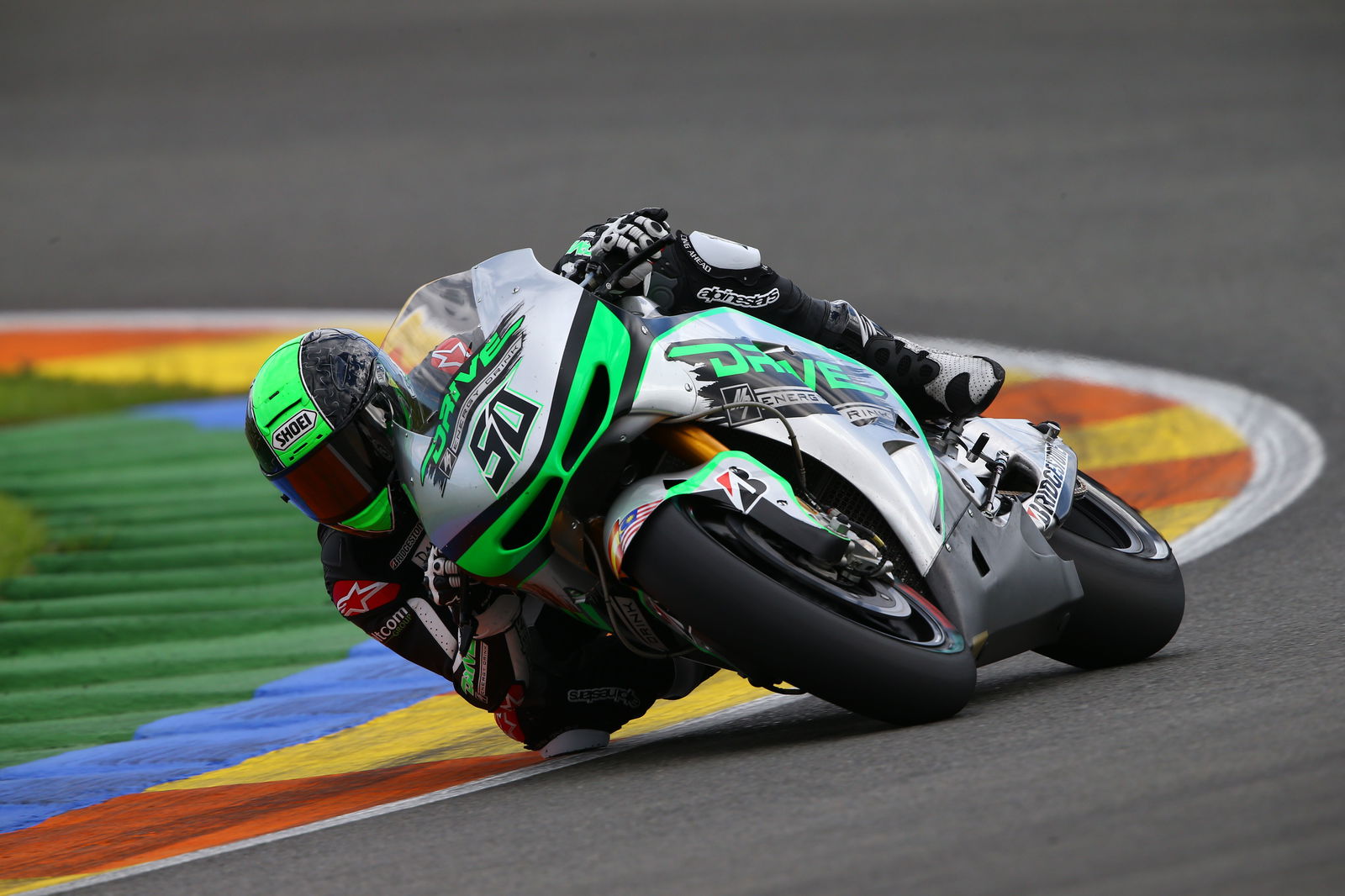'Benefits' for some bikes in MotoGP 2016

The Open class will disappear but some MotoGP manufacturers will still receive technical concessions when a control ECU becomes mandatory in 2016.
The present Open machines are given fuel, tyre, engine and testing concessions in return for using the standard ECU software.
These benefits are also given to Factory Option entries that didn't win a dry race during 2013 or are new to MotoGP - meaning Ducati, Suzuki and Aprilia this season, but not Honda and Yamaha. And that concept is set to continue.
"One issue to be decided is the package of benefits for manufacturers that didn't have good results," Corrado Cecchinelli, MotoGP's Director of Technology, told Crash.net at this week's Sepang MotoGP test.
"There will be just one set of technical rules in 2016 but there is a common misunderstanding in that. Because having just one set of rules doesn't mean that advantages for non-competitive manufacturers will be deleted. They will not be deleted under one set of rules.
"The difference is that now you have two different sets of rules, Open and Factory Option, which you can choose between. These Open and Factory names will be deleted in 2016, because they remind of double regulations.
"In future we will have just one set of rules, but still give some advantages for those with lower competitiveness. But it will depend purely on results. It will not be a class choice as it is now. And it will be decided for all bikes from each manufacturer. You will not have, for example like now, some Hondas in Factory class rules and some in Open class."
The criteria for deciding which manufacturers get the benefits will be similar to that currently in place for Ducati, Suzuki and Aprilia.
"Still under discussion are the results needed. Maybe once you get one win, or a second place plus a third, or three thirds in dry conditions starting from 2014," Cecchinelli explained.
"As long as you don't achieve such results possibly you get more race fuel [22 litres is the agreed 2016 limit] and free engine design - so no in-season development freeze.
"Let's say that Honda and Yamaha will still have a frozen engine design starting in '16. Hopefully for Ducati they will also be frozen, because they have achieved the results set. And reasonably we might assume that Suzuki and Aprilia will not be frozen and of course newcomers like KTM in 2017.
"For me the help would not include softer tyres any more. I think it would be wrong with a new tyre supplier [Michelin] to introduce this variable. But it is still under discussion."
In terms of engine numbers for the 2016 season, Cecchinelli would like to see nine as the standard, but the Manufacturers' Association favour a lower number.
"My personal position is that the number of engines should be based on cost concerns and there is an optimum number that is not the least possible," he said. "At the moment it is five engines. That will possibly become six to take into consideration the number of races have increased. Let's say the discussion now is between six and another number, which may be nine.
"My personal opinion is that nine is the optimum number to reduce the overall cost. I mean that nine engines with relevant spec will cost less than six with their spec. Because of endurance. If you want to make all the championship with one engine, it would cost more than nine made of a lower spec.
"My personal opinion is that it should be nine, with frozen design, or twelve with free design - depending on results.
"But I think this is not the discussion going on inside MSMA. My understanding is that they are discussing between six or nine and the only advantage, depending on results, would be that development is not frozen. The engine numbers would be the same."
An MSMA meeting at the Sepang test did not reach a unanimous agreement on 2016 engine numbers, meaning the issue is now set to be decided by a vote of the Grand Prix Commission.


